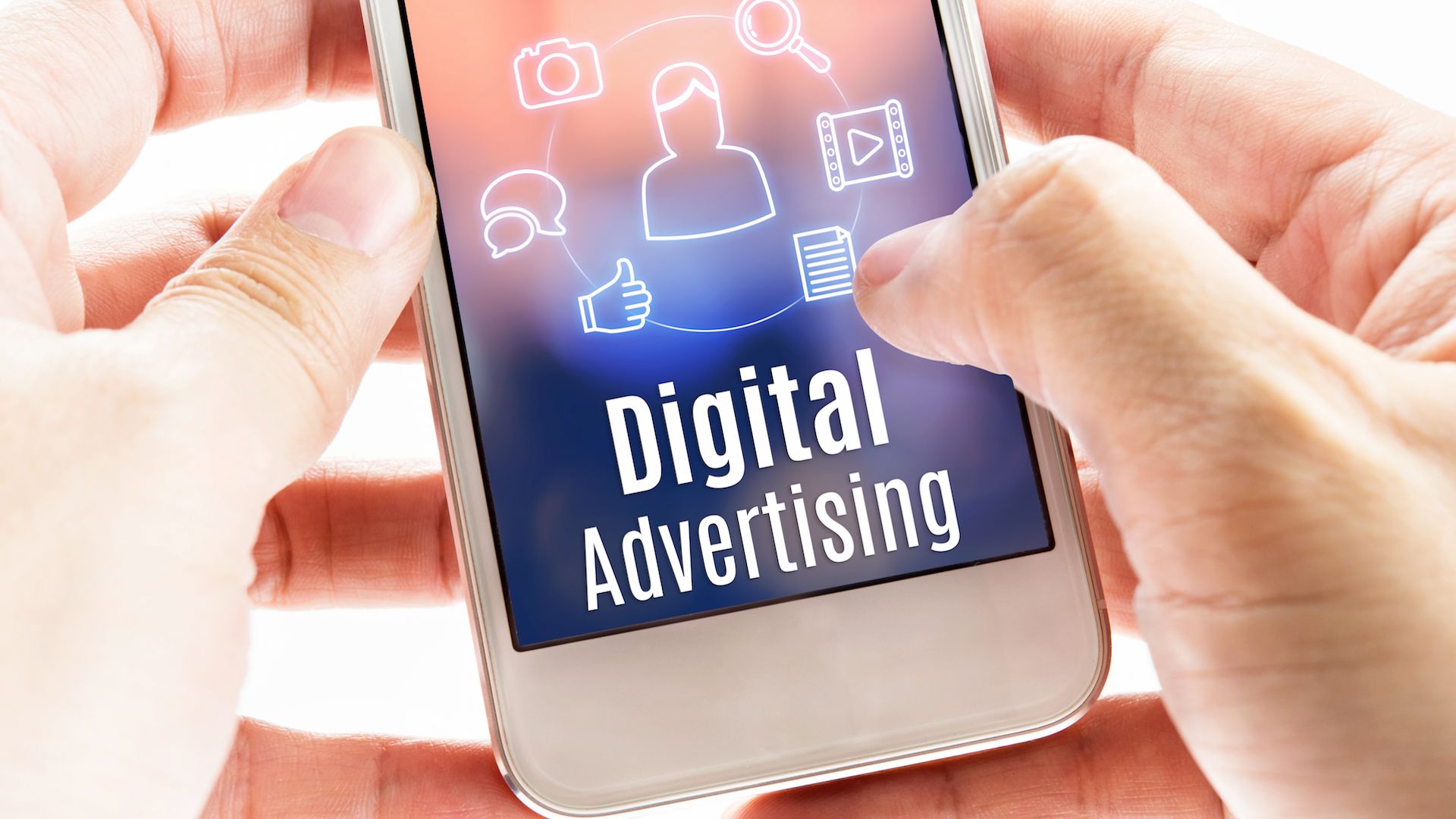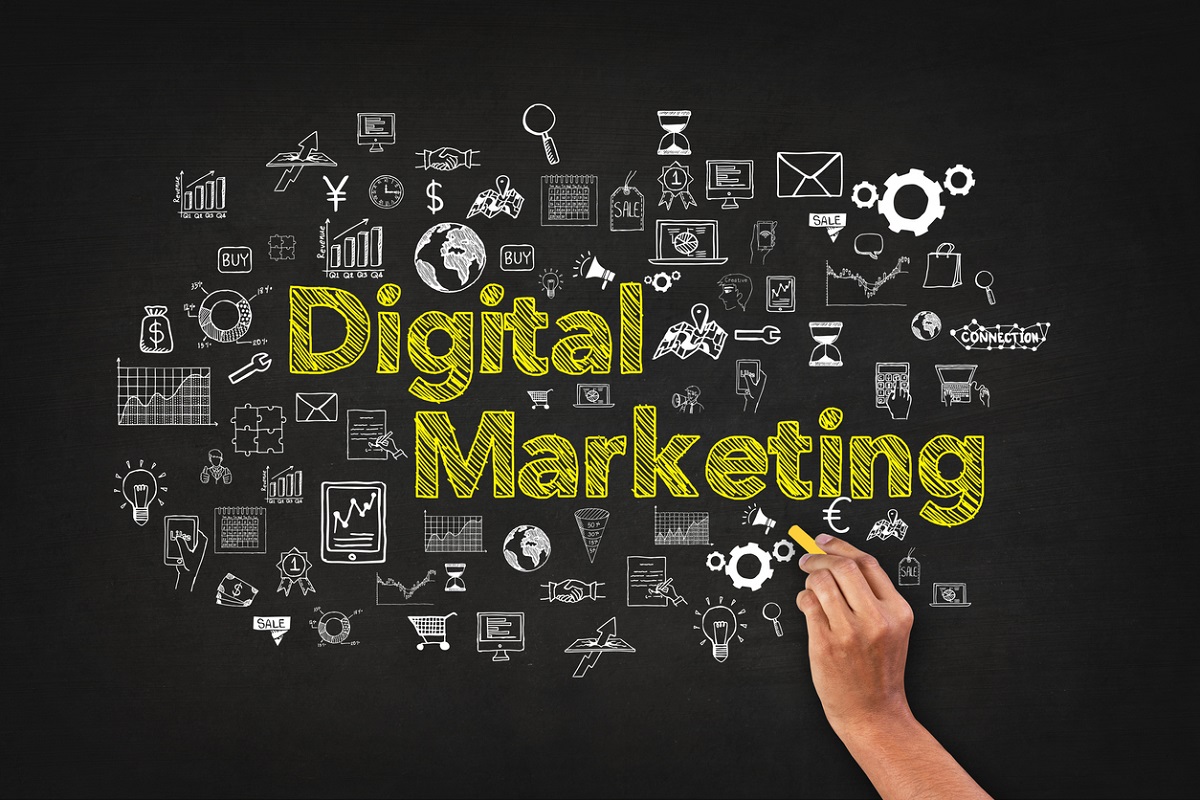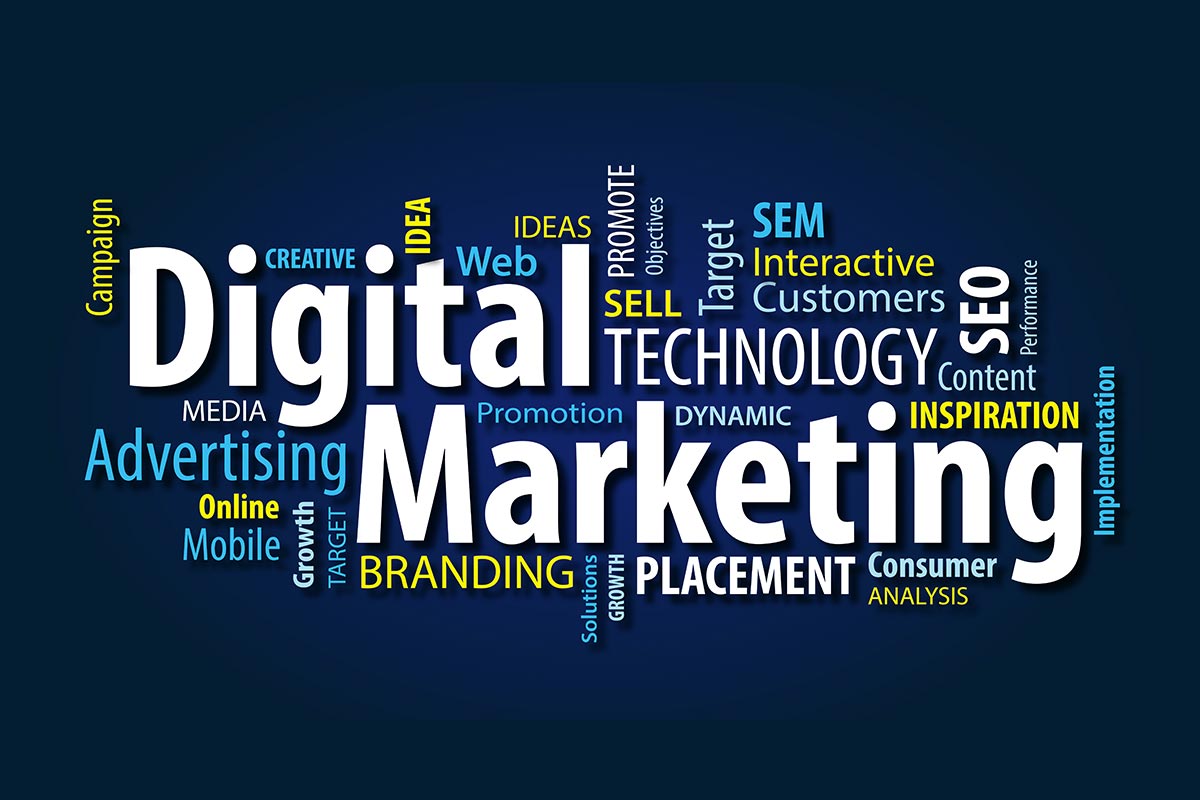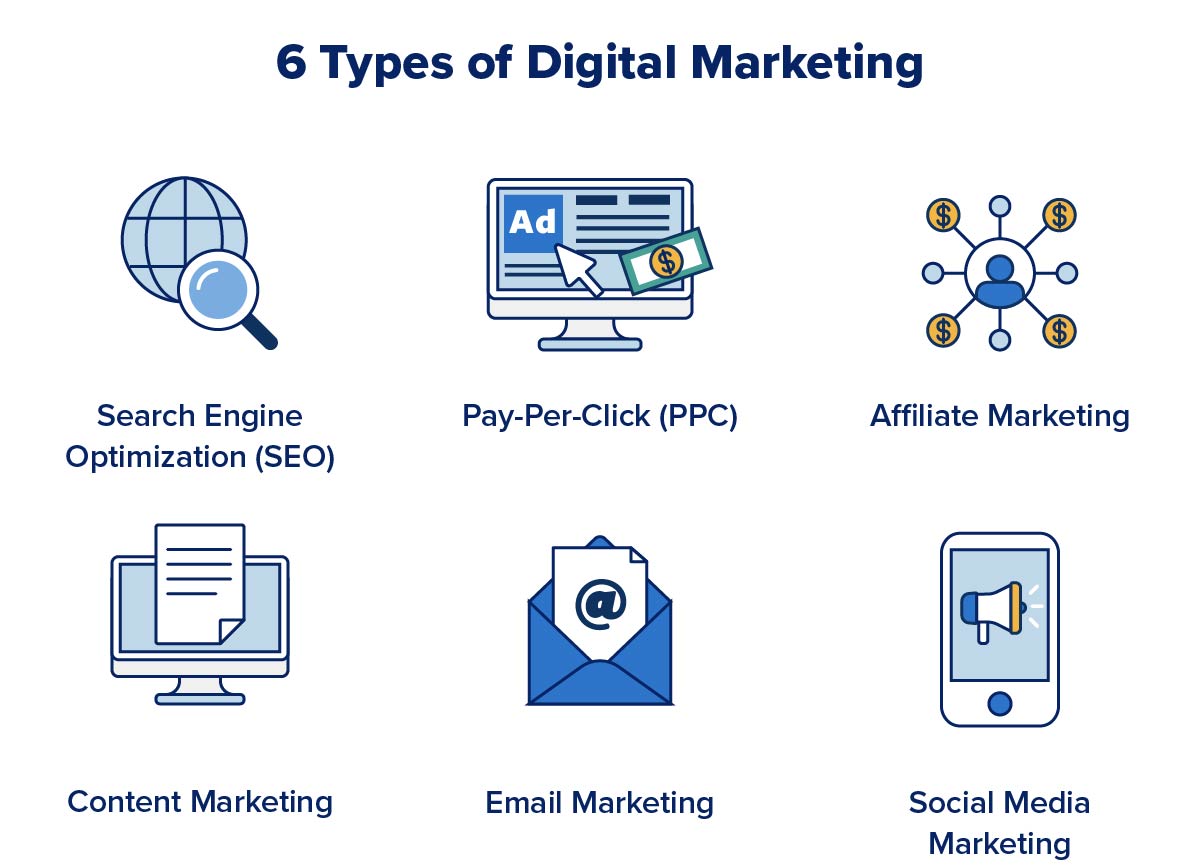In our digital-first age, advertising has transitioned from a billboard-on-the-street to a pixel-on-your-screen perspective. Digital advertising has not only democratized marketing strategies but has also become the lifeblood of businesses looking to carve their niche in the competitive online marketplace. This guide is tailored for small business owners, marketing professionals, and startups who not only want to understand the vast digital advertising landscape but wish to harness its power to propel their business forward.
Mục lục
- 1. Strategic Significance of Digital Advertising
- 2. A Deep-Dive into Digital Advert Types: Beyond the Basics
- 3. Navigating the Turbulent Waters of Digital Advertising Strategy
- 4. The Secrets to Unlocking the Full Potential of Digital Advertising
- 5. Navigating the Challenges and Ethical Considerations of Digital Advertising
- 6. Peering into the Future of Digital Advertising
- 7. Conclusion: Why Digital Advertising Matters More Than Ever
Strategic Significance of Digital Advertising

In the realm of digital advertising, understanding its strategic significance is paramount. It’s not just about the immediate visibility or clicks; digital advertising allows for precision targeting, measurable results, and high levels of customization that traditional advertising avenues simply cannot offer. For small businesses and startups, this means being able to compete on the same stage as larger corporations, without the need for exorbitant budgets. Through targeted campaigns, businesses can reach their ideal audience based on demographics, interests, behavior, and more, ensuring that every dollar spent is an investment towards reaching potential customers most likely to convert.
Benefits of Digital Advertising
Gone are the days when a single marketing blitz could define a business’s success. Today, a robust digital advertising strategy is an absolute must for any business aiming to thrive. The biggest advantage of digital advertising is its scalability and reach. It levels the playing field, allowing a small business with a focused ad strategy to compete with larger enterprises.
Understanding Digital Ads
Digital advertising provides unparalleled precision targeting, turning advertising costs into investments with trackable ROI. The metrics and tools at your disposal—such as Google Analytics and Facebook Insights—empower you with data-backed insights, allowing for continuous refinement of campaigns.
The Rise of Digital Advertising
The growth of digital advertising is exponential, with ad spend increasing year on year as traditional channels struggle to keep pace. This transition isn’t just a trend; it’s indicative of a new era where a brand’s ability to capture its audience’s attention and interact effectively in the digital space will be the hallmark of success.
A Deep-Dive into Digital Advert Types: Beyond the Basics

Digital advertising encompasses a plethora of ad formats, each designed to engage audiences in unique ways. Here’s a comprehensive look at some of the most impactful types.
Harnessing the Power of Search Engine Advertising
Pay-Per-Click (PPC) Advertising
PPC advertising is a digital marketing channel that allows you to bid on ad placement in a search engine’s sponsored links. You only pay for the advertisement when a user clicks on your ad, making it a cost-effective strategy to attract traffic to your website.
Search Engine Optimization (SEO)
SEO is the process of improving your website’s visibility in a search engine’s organic results. Although not a paid tactic, implementing SEO best practices ensures that your business ranks high when potential customers search for products or services you offer.
The Social Media Advertising Revolution
Facebook Ads
Facebook’s robust ad platform is a goldmine for businesses looking to leverage user data to find and target specific audiences. With various ad formats and objectives, from brand awareness to app downloads, Facebook Ads cater to a wide range of campaigns.
Instagram Ads
The visual platform of Instagram lends itself beautifully to image-heavy appeal and brand storytelling, making it a powerful tool for businesses whose offerings rely heavily on aesthetics or experiential engagement.
LinkedIn Ads
LinkedIn, the professional networking site, is tailored for B2B advertising, with targeting options that allow you to home in on companies, job titles, and industries, directing your message to a more career-oriented audience.
The Art and Science of Display Advertising
Display advertising involves the use of visual banners or ads placed on third-party websites. It combines the art of enticing visuals and compelling copy to catch the viewer’s attention, with the science of targeting and placement to maximize visibility and engagement. With options ranging from static images to animated graphics or interactive multimedia, display ads can significantly boost brand awareness and drive traffic to your site. Sophisticated targeting methods, such as contextual targeting (placing ads based on the content of the site) or behavioral targeting (focusing on users’ past online behavior), ensure that your ads reach the most relevant audience. Furthermore, retargeting campaigns can remind users who have previously visited your website but did not make a purchase, effectively bringing them back into the sales funnel. This multifaceted approach makes display advertising a vital component of any comprehensive digital marketing strategy, offering both breadth and depth in reaching potential customers across the digital ecosystem.
Banner Ads
Banner ads are image-based advertisements that are the digital-world equivalent of roadside billboards. They come in different sizes and are often used to support brand awareness strategies.
Retargeting Ads
Retargeting (or remarketing) is a form of online targeted advertising by which online advertising is targeted to consumers based on their previous Internet actions, often centered around products or services the user has shown interest in.
The Engaging World of Video Advertising

Video advertising has emerged as one of the most dynamic and effective formats within digital marketing. By leveraging the power of audio and visual elements, video ads can convey a brand’s message in a more comprehensive and engaging manner. Platforms such as YouTube, Facebook, and Instagram offer businesses the ability to target and reach a diverse audience with video content that can range from short, snappy clips designed to increase brand recognition to longer, story-driven pieces aimed at building deeper connections with viewers. The interactive nature of video advertising not only enhances viewer engagement but also provides measurable insights through engagement rates, view counts, and conversion metrics, allowing for the fine-tuning of marketing strategies in real-time. With the increasing consumption of video content across devices, investing in video advertising is no longer optional but a critical element of a holistic digital marketing strategy.
YouTube Ads
With a staggering viewership, YouTube’s ad platform offers in-stream video ads that play before, during, or after other videos, as well as video discovery ads that appear in YouTube search results.
In-Stream Ads
In-stream ads bring the storytelling capabilities of video to mobile devices, occupying screen real estate and capturing attention in a way that is difficult to ignore or bypass.
The Time-Tested Effectiveness of Email Marketing
Email marketing, while not a ‘new’ digital tool, remains a critical part of the advertising mix. Its personal, one-on-one nature can foster loyalty, increase customer retention, and drive direct traffic to your website.

In this constantly evolving digital landscape, crafting a successful digital advertising strategy demands an understanding of both your target audience and the myriad platforms at your disposal. It’s not just about spreading your message across the internet but doing so in a way that resonates with your audience and compels them to act. This necessitates a meticulous approach to campaign planning, execution, and monitoring, coupled with a willingness to adapt based on data-driven insights.
Choosing the right mix of advertising channels is crucial. It requires a delicate balance between reaching your target demographic where they are most active and ensuring your advertising budget yields the highest possible ROI. This often means diversifying your strategy to include a combination of search engine ads, social media campaigns, display advertising, video content, and even email marketing to nurture prospects along the customer journey.
Furthermore, leveraging analytics tools to track campaign performance and user engagement is indispensable. By analyzing metrics such as click-through rates, conversion rates, and social engagement, marketers can gain valuable insights into what resonates with their audience. This data not only informs immediate adjustments to current campaigns but also guides the strategic direction of future marketing efforts.
In conclusion, navigating the digital advertising landscape requires a blend of creativity, strategic planning, and analytical rigor. By staying abreast of emerging trends, understanding your audience at a granular level, and deploying a diversified advertising strategy, brands can effectively engage their target consumers in meaningful ways, ultimately driving business growth and success.
Knowing Your Audience Inside Out
Audience segmentation is the bedrock of any advertising campaign. By defining your target demographic, including age, gender, location, interests, and pain points, you can create ad content that resonates on a personal level.
Choosing the Right Digital Advertising Channels
The plethora of digital advertising channels can be overwhelming, but each has strengths that align with different businesses and objectives. Selecting the right mix is crucial to a successful campaign.
Crafting Compelling Ad Content
Content is king in digital advertising. Whether through text, image, or multimedia, your ad content should be engaging, informative, and should compel the viewer to take the desired action, be it a purchase, a sign-up, or another form of conversion.
Measuring and Adapting with Performance Data
The beauty of digital advertising is the wealth of performance data at your disposal. Regular analysis of this data, from conversion rates to click-through rates, allows for quick adaptation and optimization of campaigns.
The Secrets to Unlocking the Full Potential of Digital Advertising

Unlocking the full potential of digital advertising requires a deep understanding of the digital ecosystem. Marketers should not only focus on the technological aspects but also on crafting messages that resonate deeply with their target audience. The integration of storytelling techniques into digital ads can significantly enhance their impact, making brands more memorable to consumers. Furthermore, experimenting with emerging technologies such as augmented reality (AR) and virtual reality (VR) can offer immersive experiences that elevate the standard of digital advertising. These innovations allow for the creation of unique, engaging campaigns that stand out in a crowded digital landscape. Additionally, adopting a customer-centric approach, where insights from data analytics are used to tailor experiences and messages, ensures that digital advertising efforts are more personalized and effective. By continuously learning and adapting, staying ahead of industry trends, and maintaining a relentless focus on the customer experience, marketers can unlock new opportunities for growth and engagement in the realm of digital advertising.
The Art and Science of Campaign Optimization
For PPC campaigns, extensive keyword research is pivotal, ensuring that your ads are shown to users who are most likely to convert. Ad targeting, too, should be nuanced and adjusted as you gather more data about what works and what doesn’t. And don’t forget A/B testing, where small changes in ad copy or design can have a significant impact on performance.
Delving Deep into Data and Analytics
Key performance indicators (KPIs) are the compass by which you steer your campaigns. They can include cost per acquisition, return on ad spend, and bounce rates, among others. Leveraging data and analytics should be an ongoing process, with insights applied to optimize current campaigns and plan future ones.
Staying Ahead of the Curve with Industry Trends
The digital advertising landscape evolves at a rapid clip. New formats, platforms, and technologies emerge regularly, and staying informed and adaptable is key to maintaining success.

In the complex web of digital advertising, ethical considerations are as crucial as the strategies that drive campaign success. The increasing demand for transparency and privacy from consumers has led to a paradigm shift in how advertisers collect, use, and manage data. Complying with regulations such as the General Data Protection Regulation (GDPR) in the European Union and the California Consumer Privacy Act (CCPA) in the United States is not just a legal necessity but a vital component of building trust with your audience.
Furthermore, the ethical use of artificial intelligence and machine learning in advertising campaigns poses new dilemmas. While these technologies can enhance personalization and targeting, they also raise concerns about bias, misinformation, and the erosion of consumer autonomy. Balancing the benefits of advanced targeting techniques with the ethical implications requires a commitment to fairness, accuracy, and respect for consumer preferences.
Thus, navigating the challenges of digital advertising demands not only creativity and analytical skill but a steadfast adherence to ethical standards. Brands that prioritize ethical considerations in their digital advertising strategies are more likely to build lasting relationships with their customers, reinforcing brand loyalty, and trust in an increasingly skeptical digital world.
Adhering to Privacy and Data Regulations
The General Data Protection Regulation (GDPR) and other data privacy laws have tightened restrictions on how businesses collect and use consumer data. Digital advertisers must remain vigilant and respect these boundaries.
Combatting Ad Fraud and Ensuring Viewability
Ad fraud and ad blocking can undermine the efficacy of digital advertising. It’s vital to employ viewability metrics and fraud detection tools to ensure that your ads are seen by real, engaged users.
Balancing Organic and Paid Strategies
While digital advertising offers immediacy and precision, organic strategies play a crucial role in the marketing mix as well. A balance of paid and organic tactics is often the most effective approach.
Peering into the Future of Digital Advertising

As we peer into the future of digital advertising, the rise of personalized advertising through the use of big data and machine learning is undeniably shaping the landscape. This shift towards hyper-personalization allows advertisers to create highly targeted campaigns that resonate with individual users, based on their behaviors, interests, and online activities. The integration of smart technology and predictive analytics enables marketers to foresee consumer needs and preferences, delivering content that is not just relevant, but often anticipated by the audience.
Another emerging trend is the increased emphasis on privacy-first advertising. With users becoming more conscious of their digital footprints, advertisers are compelled to adopt strategies that respect user privacy while still delivering effective messaging. This includes the development of contextual advertising, which targets ad delivery based on the content being viewed, rather than relying on personal data.
Furthermore, the explosion of voice search and smart speakers presents new opportunities and challenges for digital advertisers. Optimizing content for voice search requires a different approach, focusing on natural language and question-based queries. This opens up a fresh avenue for connecting with consumers through voice ads that are seamlessly integrated into daily routines.
The continued evolution of digital advertising mandates that marketers remain agile, leveraging technology to create more personalized, privacy-minded, and engaging experiences. By staying attentive to these emerging trends and the changing preferences of consumers, digital advertisers can not only keep pace with the industry but set new benchmarks for innovation and effectiveness.
The Role of Artificial Intelligence and Automation
AI and machine learning are transforming the digital advertising landscape, from automated bid strategies to personalized content generation at scale.
Personalization and Hyper-Targeting
Advances in data analysis and consumer profiling are leading to increasingly personalized ad experiences, where ads are not just targeted at an audience but crafted for individuals.
Emerging Technologies and Their Implications
Virtual reality, augmented reality, and other emerging tech will open up new avenues for immersive ad experiences. Digital advertisers must be ready to explore and exploit these opportunities.
Conclusion: Why Digital Advertising Matters More Than Ever

In today’s digitally driven world, digital advertising stands as a pivotal component of any comprehensive marketing strategy. The ability to reach consumers where they spend a significant portion of their time—online—is invaluable. Digital advertising offers unmatched precision in targeting, enabling brands to communicate directly with their target demographics based on a wealth of data, including interests, behaviors, and even geographical locations. This level of specificity ensures that marketing efforts are not just seen, but seen by those most likely to convert, maximizing the return on investment. Furthermore, the agility of digital campaigns allows for real-time adjustments based on performance metrics, ensuring that strategies remain fluid and responsive to market dynamics. In essence, the importance of digital advertising cannot be overstated; it facilitates a level of engagement and personalization that traditional media simply cannot match, making it an indispensable tool in the arsenal of modern marketers.
Digital advertising is not just another tool in the marketer’s arsenal; it is the vanguard of modern marketing. Its adaptability, precision, and capacity for growth make it a potent force, capable of turning a modest investment into a remarkable return. By understanding the landscape, leveraging the right tools and tactics, and navigating with strategy and ethics, businesses can harness the full potential of digital advertising to connect with their audiences and achieve their goals.
